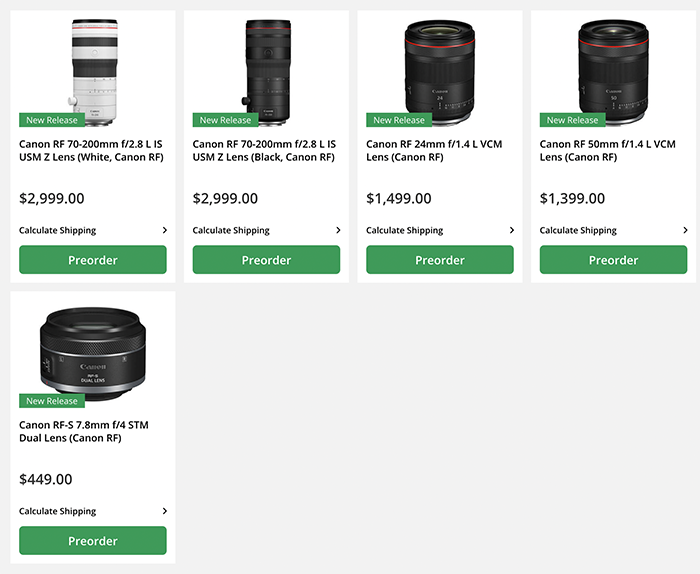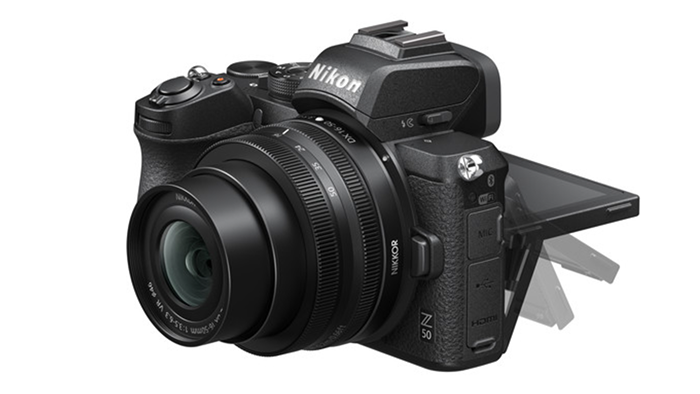Curiosity: Optor exhibited a new 100mm lens that is just 5mm thick!
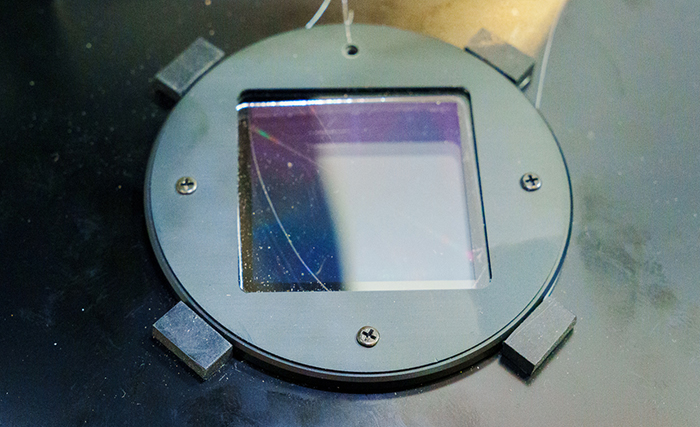
The image you see on top shows an actual 100mm “Metalens” that is just 5mm thick. It has been displayed by the company Optor at the Nexty Electronics booth at CEATEC 2024 (Source: DC.watch).
What is a Metalens?
A metalens is a device that can achieve the same effect as a regular lens by arranging cylindrical lenses on a flat surface. As you can see from this image, The metalens is made up of an infinite number of lenses of different heights. This is done using an X-ray microscope, so the individual pillars can be seen:
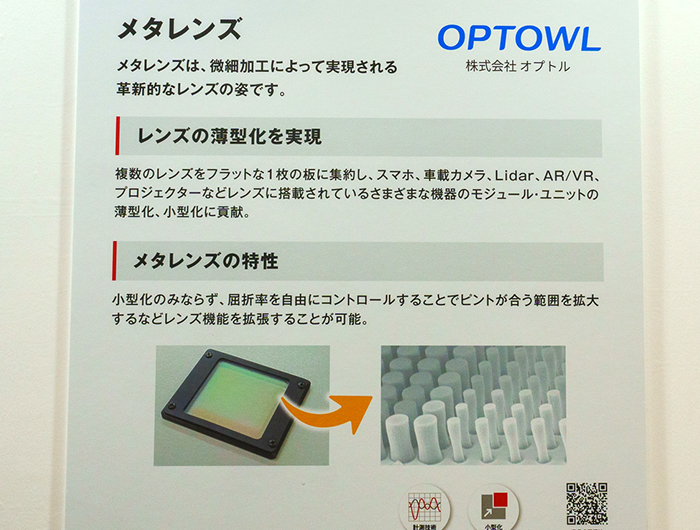
Canon, Samsung and others are working on, and it is expected to make lenses significantly thinner. However, there are technical challenges to overcome, and it will be some time before it can be used as a camera lens.
The company claims that the resolution is equivalent to that of a normal lens, and that aberrations are also corrected. Normally, lens aberrations are corrected by combining multiple aspherical lenses, but this can be done with a single metalens, which makes it possible to make the entire lens unit thinner.
However, in principle, the method relies on the diffraction phenomenon, which causes color bleeding. Because this is a physical phenomenon caused by diffraction optics, the issue of how to deal with this bleeding becomes an issue:
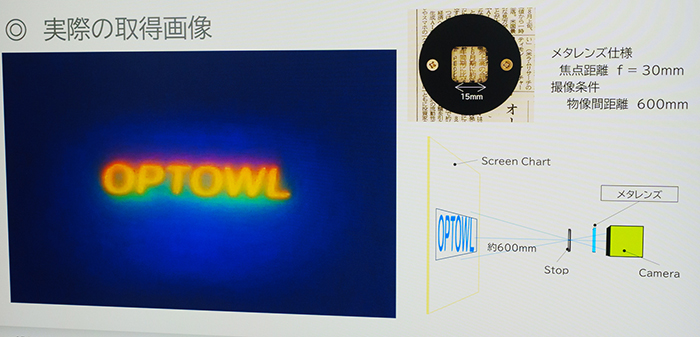
Image shows the bleeding effect
For camera lenses, the company expects that by using multiple pieces of glass in addition to metalens, it will be possible to reduce the number of glass pieces used up to now while suppressing chromatic aberration, making the lens thinner and smaller.
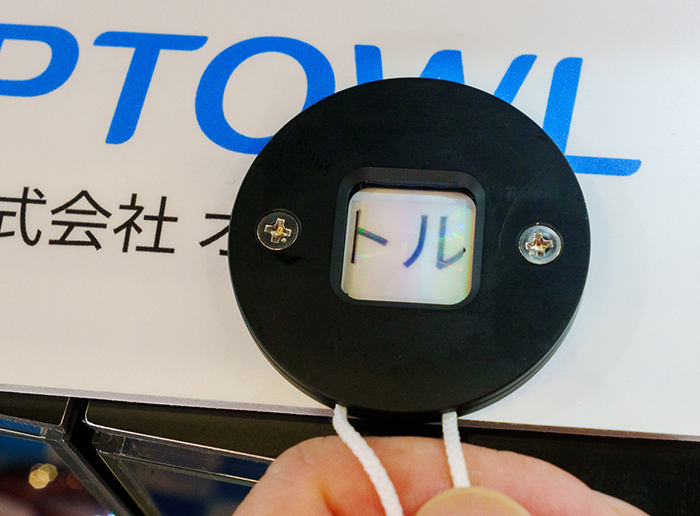
A wide-angle lens with a focal length of 30 mm
Compared to regular glasses, metalens can change the focal length within a single lens by altering the wavefront, so one application could be to use a thin lens for both near and far vision depending on the viewing angle.
The company has already established a mass production system, and after the announcement at CEATEC, it plans to begin rolling out the technology to the market. Going forward, the company plans to make the device even thinner and to aim for a wide range of applications, such as camera lenses.
To summarize:
This technology is amazing, but it will be quite a while before we see lenses like this for our mirrorless cameras. But we are getting closer and closer to my dream of a 20-200mm f/2.8 pancake lens :)

